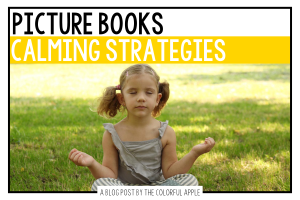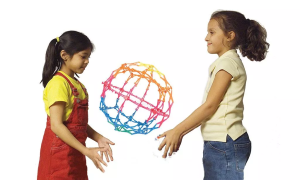Introducing preschool kids to breathing exercises can be an invaluable tool in helping them navigate their emotions, manage stress, and develop essential self-regulation skills.
Teaching young children how to breathe consciously not only promotes calmness and relaxation but also enhances their focus and overall well-being.
Engaging in simple breathing exercises can be a fun and interactive way for preschoolers to explore their bodies and learn important techniques for self-care.
Now, we present easy breathing exercises for preschool kids, offering a range of techniques that are age-appropriate, engaging, and easy to understand.
These exercises can be incorporated into daily routines, circle time activities, or used as tools to address specific situations, empowering young children to cultivate a sense of inner calm and emotional resilience.
Activity 1: “Bubble Blowing Breath”

Invite preschool kids to engage in the playful “Bubble Blowing Breath” activity. Provide each child with a small bubble wand and a bottle of bubble solution. Encourage them to take a deep breath in through their nose and slowly exhale while blowing gentle bubbles. As they blow the bubbles, they can observe the slow release of air and feel the calming effect on their bodies. This activity not only helps children practice deep breathing but also adds a touch of fun and excitement to their breathing exercises.
Activity 2: “Nature Breathing”

Take preschoolers outside to a natural setting, such as a garden or a nearby park. Guide them to find a comfortable spot and sit down. Encourage the children to take slow, deep breaths while paying attention to the smells, sounds, and sensations of nature around them. They can imagine inhaling the fresh scent of flowers or the crispness of the air and exhaling any tension or worries. This activity combines the benefits of nature’s calming influence with deep breathing, fostering a sense of connection to the environment and promoting mindfulness.
Activity 3: “Animal Breath”

Preschoolers love animals, making the “Animal Breath” activity a delightful way to introduce breathing exercises. Choose a few animal poses, such as a lion’s roar or a snake’s hiss, and demonstrate how to imitate their breathing sounds. Encourage the children to take deep breaths while pretending to be the animals, making the corresponding sounds and movements. This activity not only stimulates their imagination but also helps them develop control over their breath and body while having a blast imitating their favorite creatures.
Related: 15 Inspiring Vision Board Ideas for Kids
Activity 4: “Feather Breathing”

Provide each preschooler with a lightweight feather. Guide them to sit or stand in a relaxed position and hold the feather in front of them. Instruct the children to take slow, deep breaths through their noses, and as they exhale, encourage them to blow gently on the feather, trying to keep it floating in the air. This activity not only encourages deep breathing but also helps children practice breath control and develop focus and concentration. They can challenge themselves to keep the feather in the air for longer periods, making it an engaging and rewarding exercise.
Activity 5: “Belly Buddies”

Instruct preschoolers to lie down on their backs and place a small stuffed animal or toy on their bellies. Guide them to take slow, deep breaths through their noses, feeling their bellies rise and fall with each inhale and exhale. Encourage the children to observe the gentle movement of their “belly buddies” as they breathe. This activity promotes diaphragmatic breathing and helps children become aware of their breath while providing a tactile and visual cue for the process. It can be a calming and comforting exercise, particularly useful during quiet or nap times.
Related: 20 Fun Games Like Four Corners
Activity 6: “Colorful Balloon Breaths”

Gather a variety of colorful balloons and ask the preschoolers to sit or stand in a circle. Inflate the balloons to a small size and give one to each child. Instruct them to take a deep breath through their noses and then exhale slowly into their balloons, inflating them. Encourage them to notice the colors of their balloons expanding as they breathe out. Once the balloons are filled, they can release the air and watch them deflate. This activity not only teaches deep breathing but also adds a visual element, making it engaging and enjoyable for the children.
Activity 7: “Rainstorm Breathing”

Create a calming atmosphere by dimming the lights or playing soft rain sounds. Have the preschoolers sit comfortably on the floor and close their eyes. Instruct them to imagine a gentle rain shower and guide their breathing accordingly. As they take a deep breath in, encourage them to imagine the raindrops falling, and as they exhale, ask them to visualize the sound of the rain hitting the ground. This activity helps children focus on their breath while fostering relaxation and a sense of tranquility.
Activity 8: “Blow Out the Candles”

Place a few pretend or real candles (with adult supervision) on a table in front of the preschoolers. Instruct them to sit in a circle and take turns pretending to blow out the candles while practicing their breath control. Encourage them to take a deep breath through their noses and then exhale slowly and steadily to extinguish the candles. This activity not only teaches deep breathing but also enhances coordination and social interaction as children take turns and cheer each other on.
Activity 9: “Breathing with Music”

Select a calming instrumental piece of music and play it for the preschoolers. Instruct them to sit or lie down comfortably and breathe along with the rhythm of the music. Encourage them to take slow, deep breaths as they listen and let the music guide their breathing pattern. This activity combines the benefits of music and deep breathing, promoting relaxation, focus, and a sense of harmony within their bodies.
Activity 10: “Sensory Breathing”

Create a sensory bin by filling a container with a soft material such as rice, sand, or beans. Place small objects with different textures and shapes into the bin. Invite the preschoolers to explore the sensory bin while practicing their breathing. Instruct them to take a deep breath in as they touch or manipulate an object and exhale slowly as they release it. This activity engages multiple senses while teaching children to connect their breath with tactile experiences, promoting mindfulness and sensory awareness.
Activity 11: “Shape Breathing”

Prepare cutouts of different shapes, such as circles, squares, triangles, and hearts. Distribute one shape to each preschooler. Instruct them to hold the shape in front of them and take a deep breath as they trace the outline of the shape with their fingers. Then, as they exhale, have them imagine filling the shape with their breath, starting from one corner and moving along the edges. This activity combines visual and tactile elements with deep breathing, fostering focus, hand-eye coordination, and breath awareness.
Activity 12: “Yoga Breaths”

Introduce preschoolers to simple yoga poses that incorporate breathing. Teach them poses like the Tree Pose or the Butterfly Pose, and instruct them to take deep breaths as they hold the poses. Encourage them to imagine they are breathing in the qualities of the pose (such as strength or calmness) and exhaling any tension or worries. This activity not only promotes deep breathing but also enhances body awareness, balance, and flexibility.
Activity 13: “Counting Breaths”

Guide the preschoolers to sit or lie down comfortably. Instruct them to take slow, deep breaths in through their noses and then count each exhale. Start with counting to three and gradually increase the count as they become more comfortable. Encourage them to visualize the numbers in their minds as they count their breaths. This activity helps children focus on their breath and develop concentration skills while also introducing the concept of counting and numbers.
Activity 14: “Storytime Breathing”

Choose a calming story or picture book to read aloud to the preschoolers. Throughout the story, pause at key moments and encourage the children to take deep breaths in response to the events or emotions in the narrative. For example, if the characters in the story are climbing a mountain, instruct the children to take deep breaths as if they were climbing too. This activity combines storytelling with breath awareness, allowing children to engage their imagination while practicing conscious breathing.
Activity 15: “Breathing with Hoberman Sphere”

Introduce the preschoolers to a Hoberman Sphere, a collapsible and expandable toy that resembles a geometric shape. Show them how to expand and contract the sphere with their breath. Instruct them to take a deep breath in as they expand the sphere and exhale slowly as they contract it. Encourage them to synchronize their breath with the movements of the sphere. This activity combines visual and tactile elements, promoting deep breathing, focus, and coordination.
Activity 16: “Breathing with Stuffed Animals”

Ask the preschoolers to bring their favorite stuffed animals to a designated area. Have them lie down on their backs and place their stuffed animals on their bellies. Instruct the children to take slow, deep breaths, observing how their stuffed animals rise and fall with each breath. Encourage them to imagine their breath as a soothing lullaby that helps their stuffed animals relax. This activity promotes relaxation, deep breathing, and a sense of comfort and connection with their cherished toys.
Activity 17: “Yawn and Stretch”

Guide the preschoolers to stand up and stretch their arms high above their heads. Instruct them to take a deep breath in through their nose, raise their heels off the ground, and let out a big yawn as they exhale. Encourage them to stretch their bodies as they continue to breathe deeply. This activity promotes full-body engagement, deep breathing, and the release of tension or stiffness, leaving the children feeling refreshed and energized.
Activity 18: “Partner Breathing”

Pair up the preschoolers and have them sit facing each other. Instruct them to place their hands on their partner’s shoulders or knees. Guide them to take slow, deep breaths together, synchronizing their breaths as much as possible. Encourage them to feel the rise and fall of their partner’s breath and to provide gentle support by applying slight pressure on their partner’s shoulders or knees. This activity fosters cooperation, empathy, and a sense of connection as children engage in shared breathing.
Activity 19: “Feather Balance”

Provide each preschooler with a lightweight feather and ask them to stand up, holding the feather in the palm of their hand. Instruct them to take slow, deep breaths while focusing on keeping the feather balanced on their hand. Encourage them to observe how their breath affects the feather’s movement and to make gentle adjustments to maintain its balance. This activity helps children develop breath control, concentration, and fine motor skills while providing a visual representation of the impact of their breath.
Activity 20: “Gratitude Breathing”

Guide the preschoolers to sit or lie down comfortably. Instruct them to think of something or someone they are grateful for. As they take a deep breath in, encourage them to imagine breathing in the feeling of gratitude and appreciation. As they exhale, have them release any tension or worries. This activity helps cultivate a positive mindset, emotional well-being, and an understanding of gratitude while incorporating deep breathing as a tool for relaxation and reflection.


